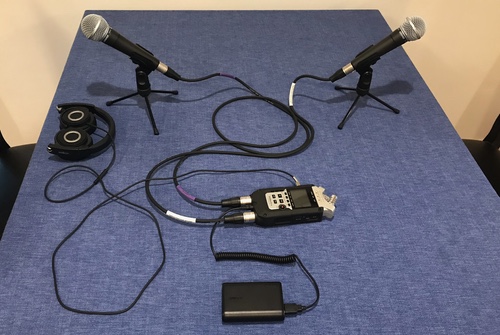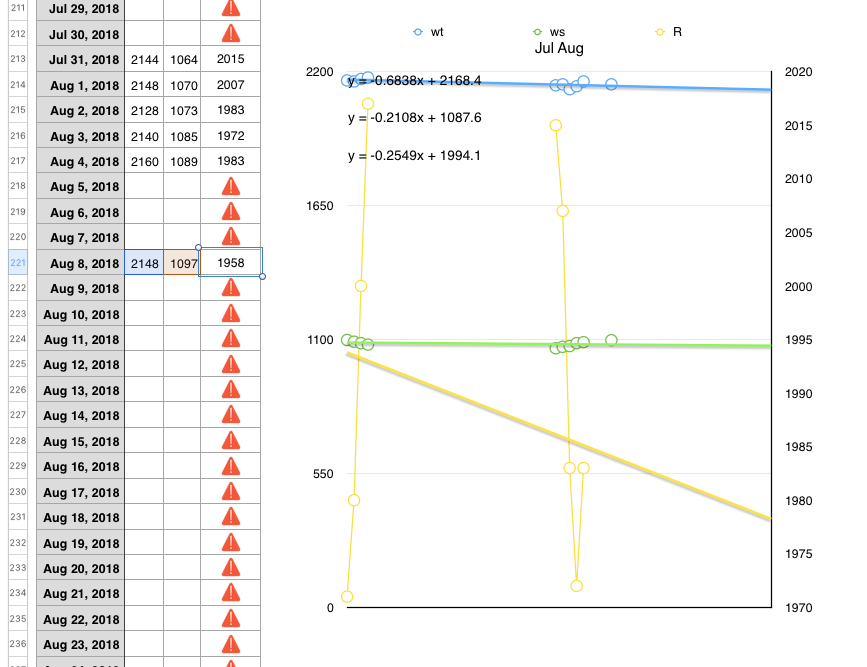Exercise is not about weight loss.
Exercise builds physical ability and mental health.
For me, it began when I fell in love– with a bicycle.
The story of a boy and his bicycle
Long after college, way down in my downward death spiral, I bought a cheap mountain bicycle. Today, I don’t recall what possessed me to even want to buy a bike. I guess it just reminded me of the freedom I’d discovered when as a kid I first set out on a bicycle.
At the time, we were living in an apartment a short ride from a long park that followed a meandering creek. The park has long trails—some asphalt, some packed gravel—that follow the creek, and it has a few, short, side trails that almost resemble mountain biking.
I fell in love.
I fell in lust is probably more accurate.
I pedaled and pedaled. …and then I pedaled some more. …and then a lot more. I literally wore out that cheap, beautiful bike in the first summer.
During that summer we bought a mountain bike for my dad. He bought an hybrid bike for my mom. Then for a Christmas present, my parents and Tracy bought me a nicer bike. Whereas I was previously crazy about riding, with a new, better, lighter bike, I took things up several notches to addiction, and began riding the daylights out of everything.
I bought a “Mountain Biking Pennsylvania” book and started just heading out to ride trails from the book. Tracy bought a Cannondale when she changed jobs, and then things got out of hand—like Fear and Loathing in Las Vegas out of hand. In the end, I was directly responsible for 27 people going to a particular bike shop and buying bikes because I kept trying to find someone who had the bicycling bug as bad as me.
I pedaled on into the seasons. I commuted the short 2 miles to and from my office in rain and snow. I had studded snow tires for the winter. I replaced bike parts as they wore out, and modified the bike more and more until the bike shop owner, (at this point, a good friend,) finally said, “You know, there are other bikes.” It had never occurred to me that I could own more than one bike. he looked at me like the simpleton I was, “Craig, some people have so many bikes, they hide the newest ones from their wives.”
Re-learning to move
The story continues of course. (The new bike is named Beelzebub, and is the first bike I’ve ever named.) But this article is about “exercise”, not about my affairs with bikes.
In the midst of it all, I understood that it was all partly the runner’s high aspect. But also knew that I simply felt better the more I rode those bikes. Sure my wrists got sore, and I became a menace in the local park zooming around and around like it somehow mattered in the grand scheme. But in the process, my body was changing.
Much later I learned that what I had done was change my identity; changed the way I saw myself. I became the sort of person who would get up early on weekends to drive an hour to ride a bike all over some trail because it was “Trail number #87” in a book. I became the sort of person who learns about bikes, then learns about exercise, and then learns about glycogen storage in muscles.
At the very beginning of the bicycling epoch, I was building a lot of muscle. Well, a “lot” compared to the gelatinous blob of fat I had converted myself into after college. Muscle requires energy to build it and then some energy to maintain it. So in the beginning I got a small win on weight loss, just by adding muscle. As my daily caloric needs went way up, it halted the creeping weight gain.
Years later I learned that exercise is simply, generally healthy.
That sounds like a platitude, but it’s not: Even small amounts of exercise have out-sized benefits in your health and your daily mood. If I exercise just a little, (for example, 20 minutes of moderate walking,) then I sleep better that night, and every time I exercise I get a small psychological benefit.
The key point was the change in my mental health: Exercise made me feel better, and the better I felt, the more I wanted to exercise. Exercise didn’t make me lose weight: It improved my health, and I became the sort of person who weighs less. That sounds subtle, but it’s tremendously easier than trying to lose weight directly.
Compensatory adaptation
I changed my behavior (I added biking) and my body responded by adapting. (Compensatory adaptation from Ned Kock is a great, deep-dive.)
I added some muscle, changed some hormone levels and interactions, cleaned up some mitochondrial function, and other things improved. But soon (it was probably about a year) my body had adapted to where its new state worked well enough for the activities I was doing regularly. This is the famous plateau effect.
As I’ve mentioned, I didn’t realize this is what was happening (the plateau). I just bike bike bike bike biked all over everything. Meanwhile I was tracking things in my health journal, tweaking things here and there (sleep, moving dinner-time earlier, food choices, etc..)
How would you implement this intentionally? If you are even farther out of shape than I was at the start, I don’t suggest starting with biking. Walking is probably better, or maybe even swimming. Exactly what you do isn’t the point. It’s that you begin to exercise. Don’t to do in the sense that, “I have to go exercise now.” (This is why gym memberships generally don’t work as a New Year’s resolution.) Rather, you want to exercise just as something you do, and that will transform yourself into the type of person who exercises.
I am the type of person who…
ɕ

